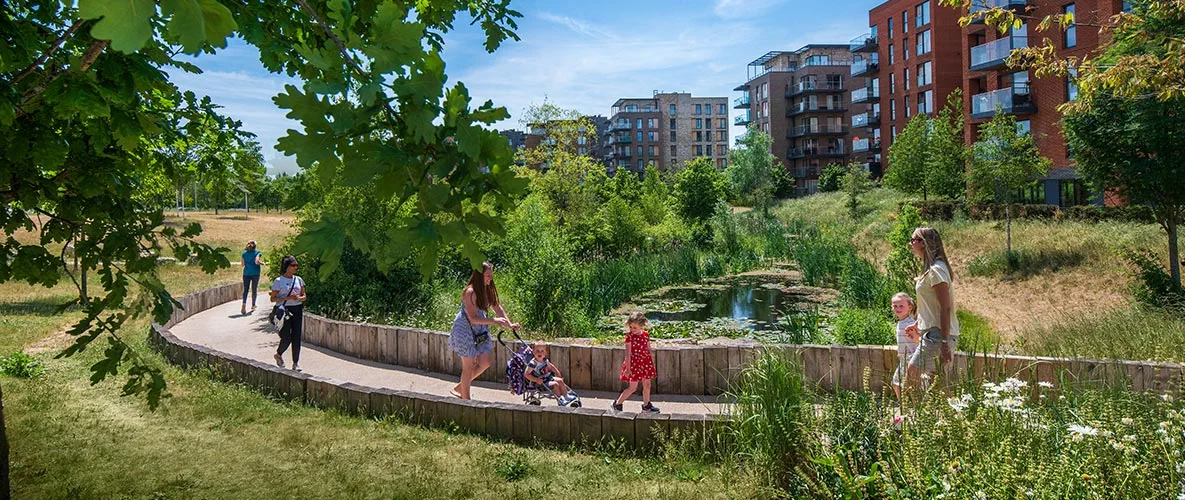Thoughts on Greening Up large sites from Berkeley Group’s CEO Rob Perrins
A bird’s eye view of our towns and cities reveals the degraded state of nature within today’s urban landscapes. Street trees, greens and ponds have been lost, squeezed, damaged and fragmented. And urban communities now suffer nature’s absence in a multitude of ways.
But the tide is starting to turn. Environmental awareness has become mainstream and natural habitats and eco-systems are better understood. Nature recovery and climate action are real priorities, and we now see our connection to nature as fundamental to our health and wellbeing.
And now, a fascinating new report by Create Streets, published on 26 September, has crystalised the many benefits of restoring nature within our urban landscapes. They make a very powerful case, while pinpointing key barriers to delivery, as-well-as valuable opportunities to drive greening-up on many different levels.
The report’s timing is good, as developers will soon be required to value, protect and measurably increase the biodiversity on their sites through the planning process. At Berkeley we have been delivering biodiversity net gain voluntarily since 2016, having so far put it into practice on 54 different projects. Of course I would say this but the experience really has been an overwhelmingly positive one for us, with each biodiverse masterplan gradually maturing into a vividly beautiful and hugely popular place. And we’ve learnt that wilder and more varied natural landscapes are more resilient to climate change and more engaging than traditionally designed green open space, becoming a real source of joy, pride and community activism of the most uplifting kind.
But delivering these very positive outcomes is not easy. Large-scale placemaking is a complex process and it takes commitment to embed a deeper appreciation of nature and its many important roles within our town and cities.
The increasingly rigid and prescriptive planning system is another big challenge, with layer upon layer of (well-meaning) policies being brought into force, many of which are in direct conflict. Regretfully, these rules can be unbendingly applied in isolation of each another, instead of being thoughtfully considered as part of the overall planning balance. This gradual hardening of the system now greatly inhibits design and creativity, making it harder to unlock complex urban sites and create the green and beautiful places local communities need.
As a business specialising in large-scale urban regeneration, we are fascinated by the complex interplay between nature recovery, climate resilience, housing delivery, economic renewal and community strength. Placemaking is not a zero-sum game and truly successful neighbourhoods must be individually designed alongside local people, ensuring they strike the best possible balance and respond to local priorities and concerns.
Greening Up by Create Streets will inform and inspire our approach as we take forward 32 of the UK’s most challenging brownfield regeneration projects. This report is essential reading for those concerned with the future health, beauty and vitality of urban Britain and we hope it will bring greater focus and clearer thinking to this vital area of public policy and debate.
Rob Perrins, Chief Executive, Berkeley Group
To read more about our approach to nature on our sites see here


